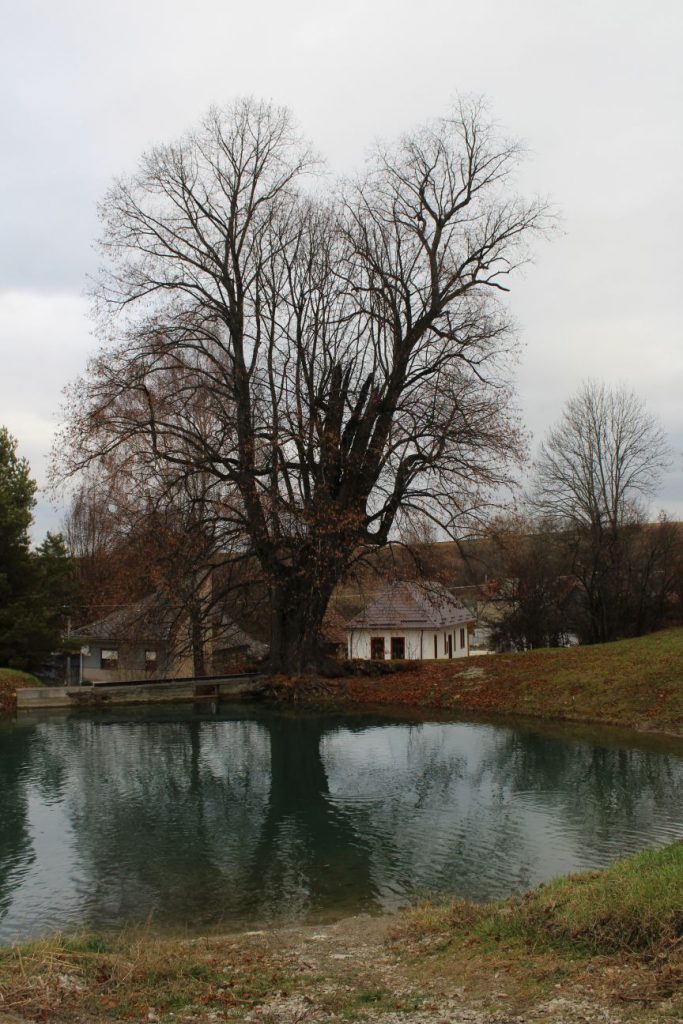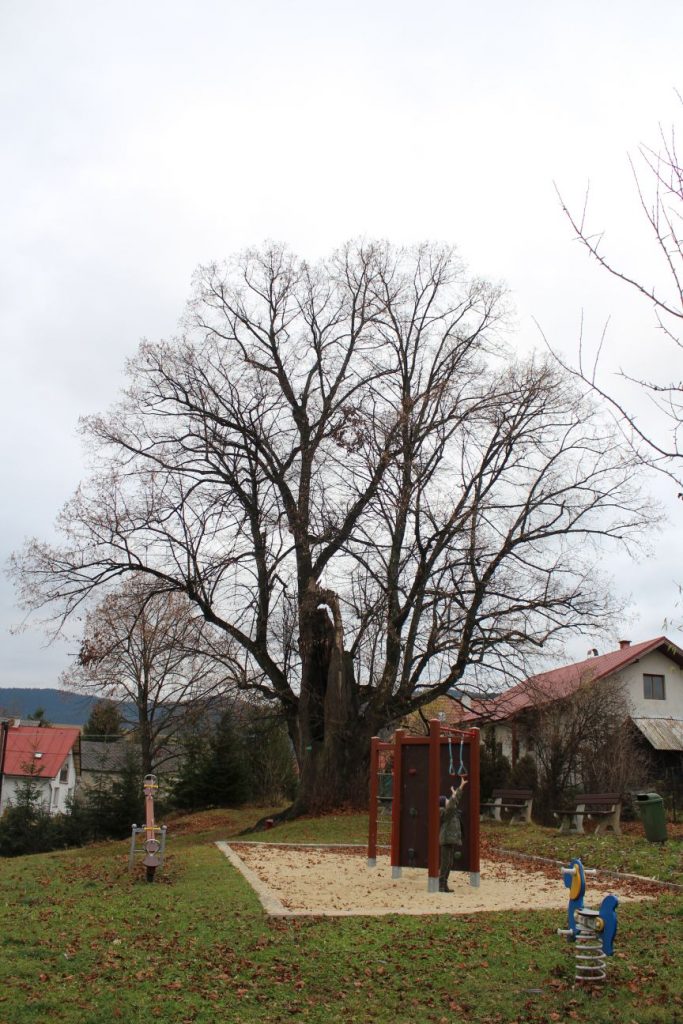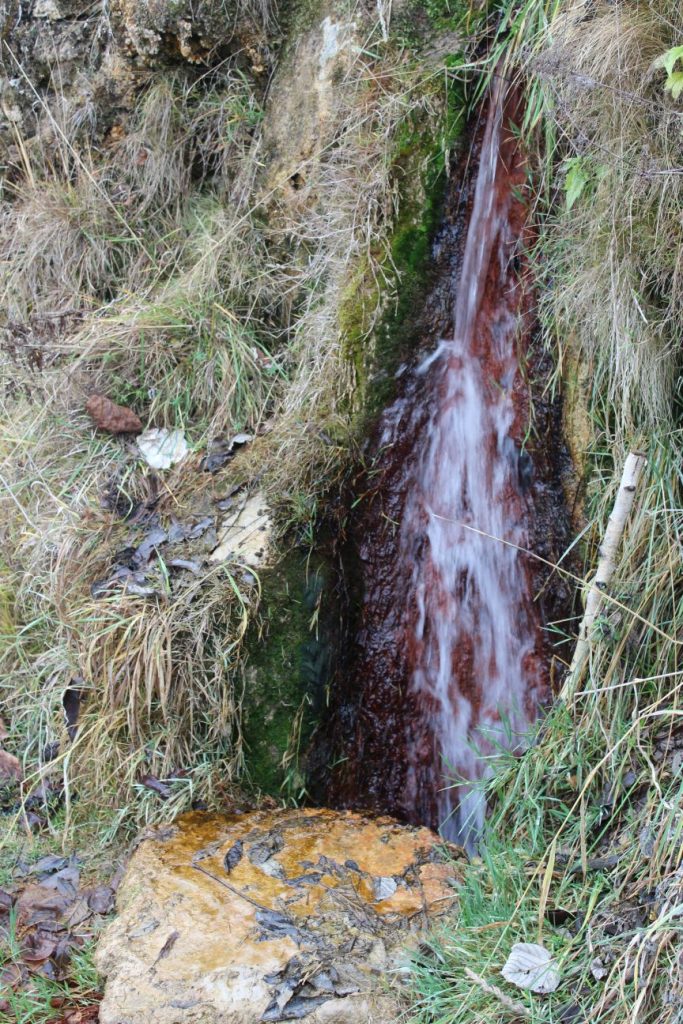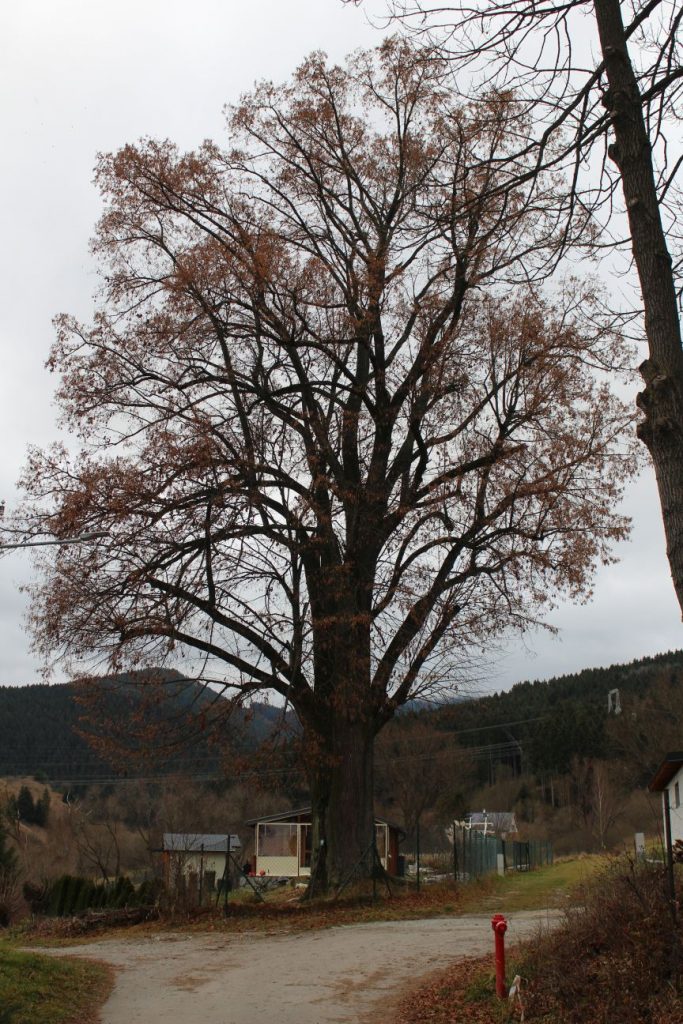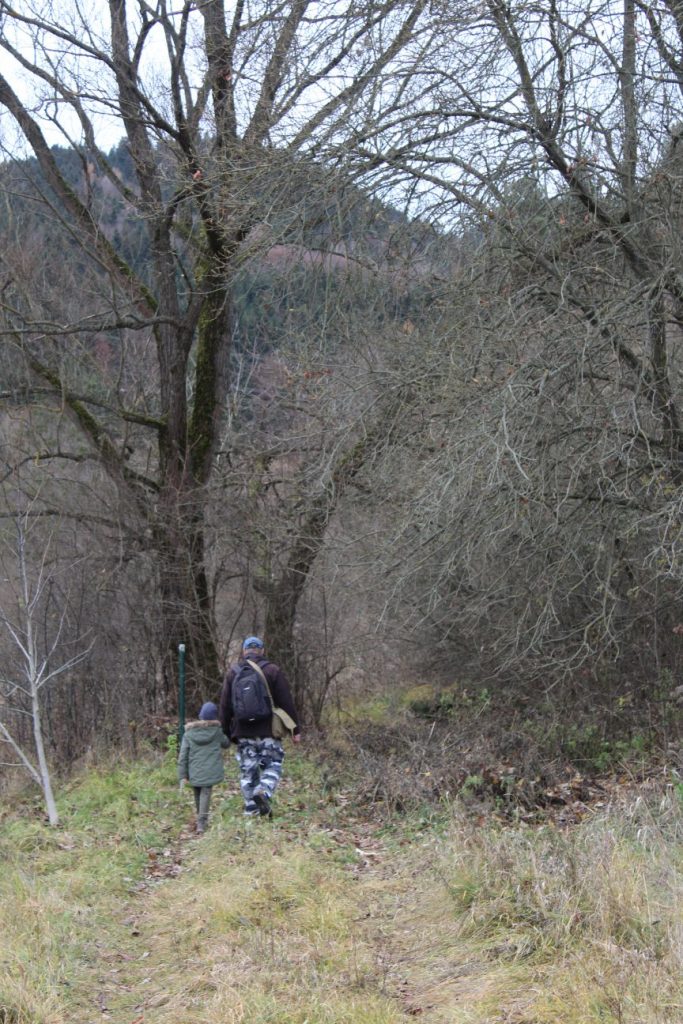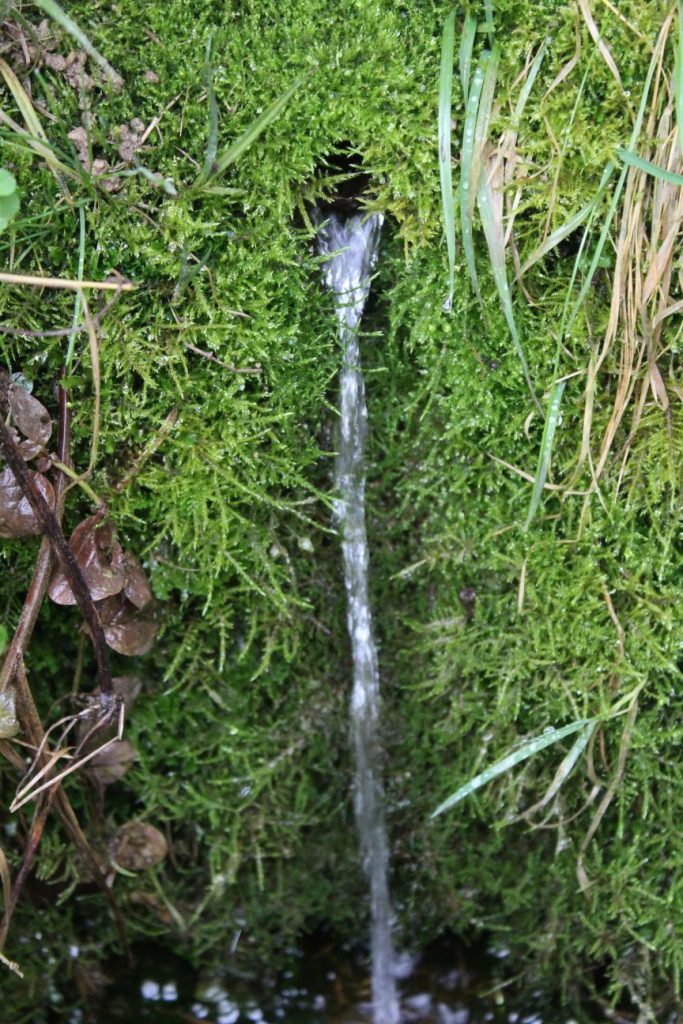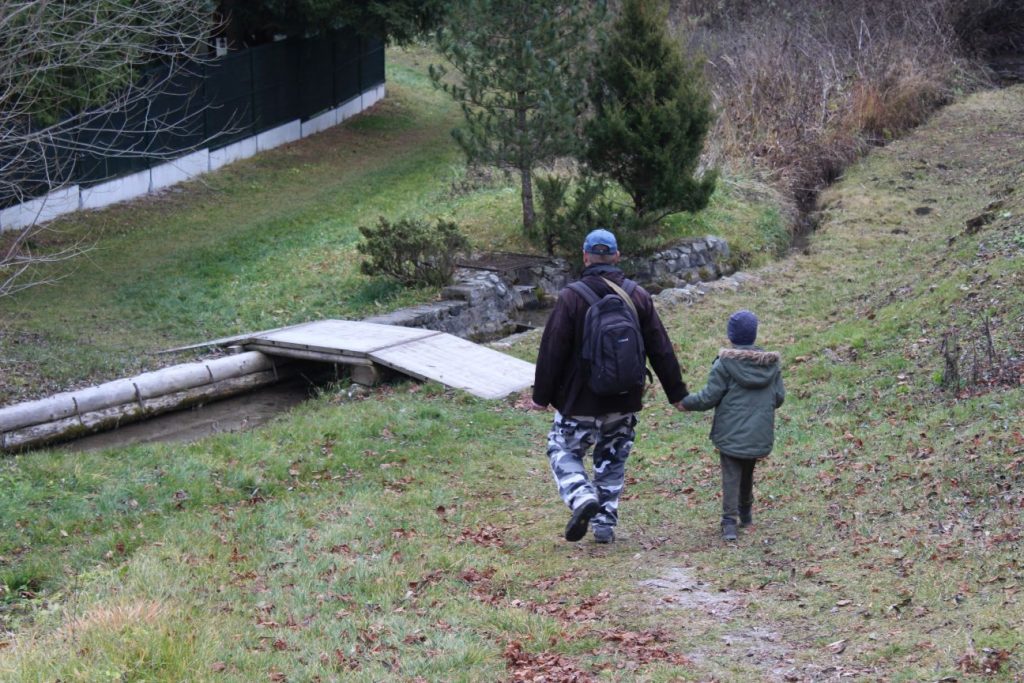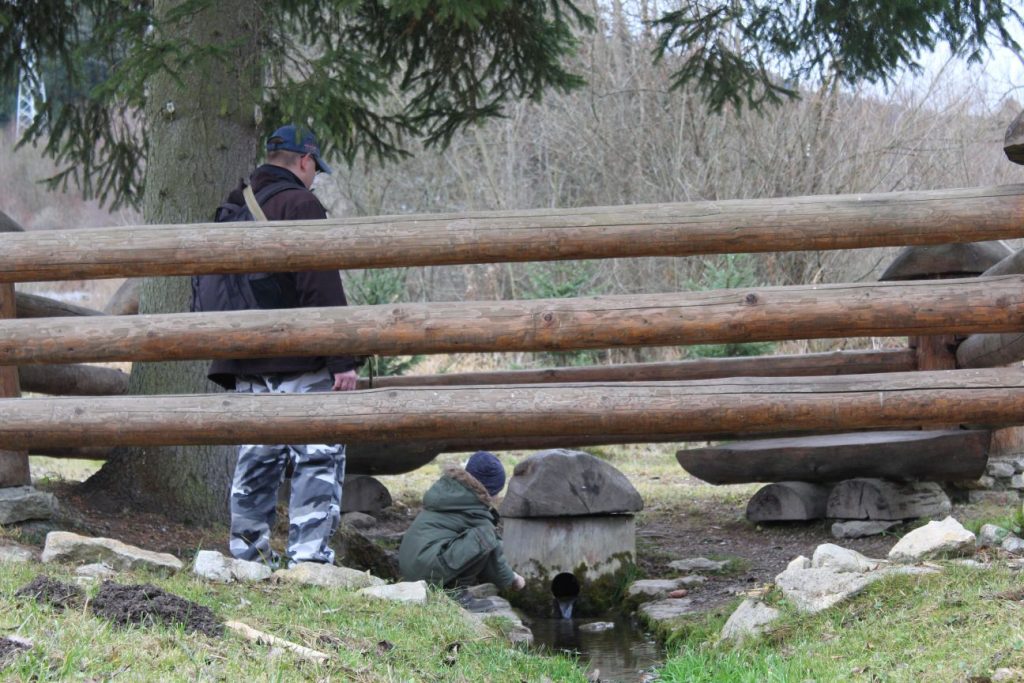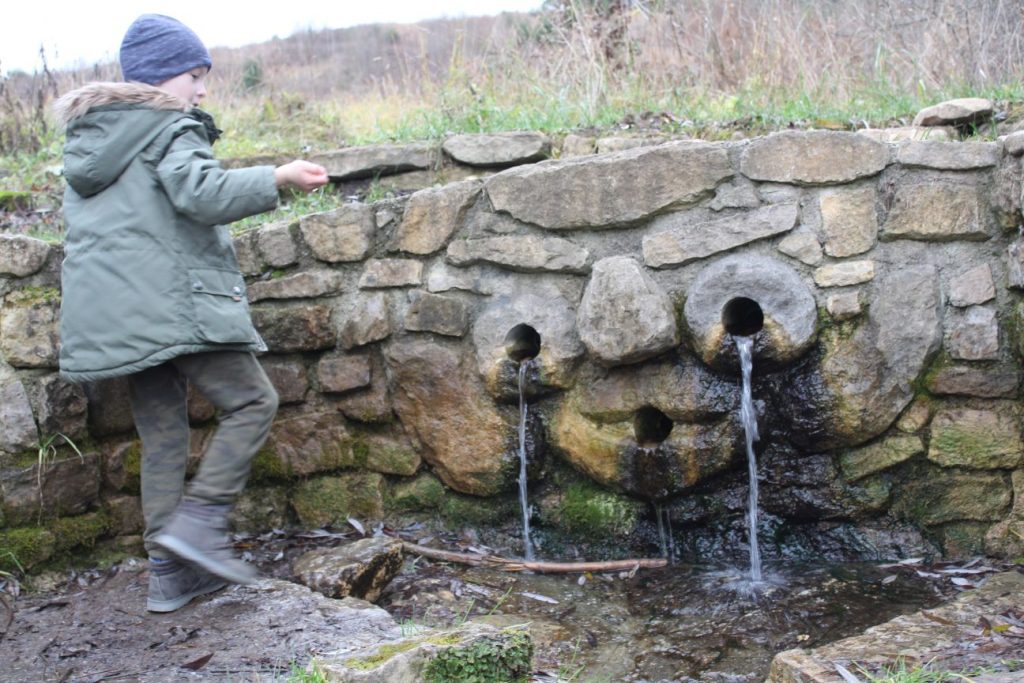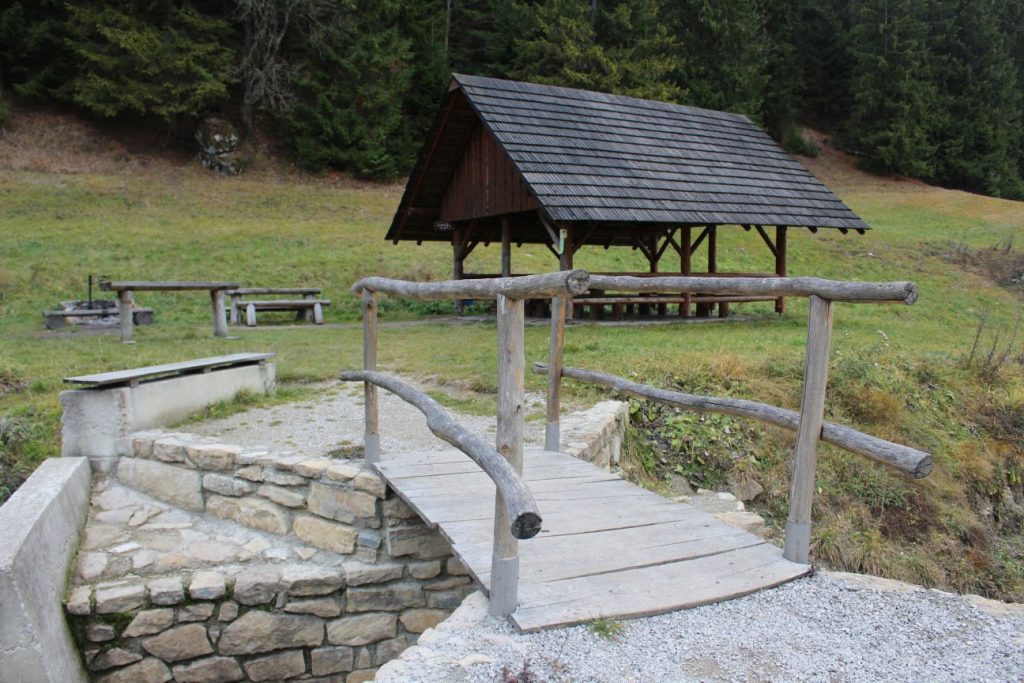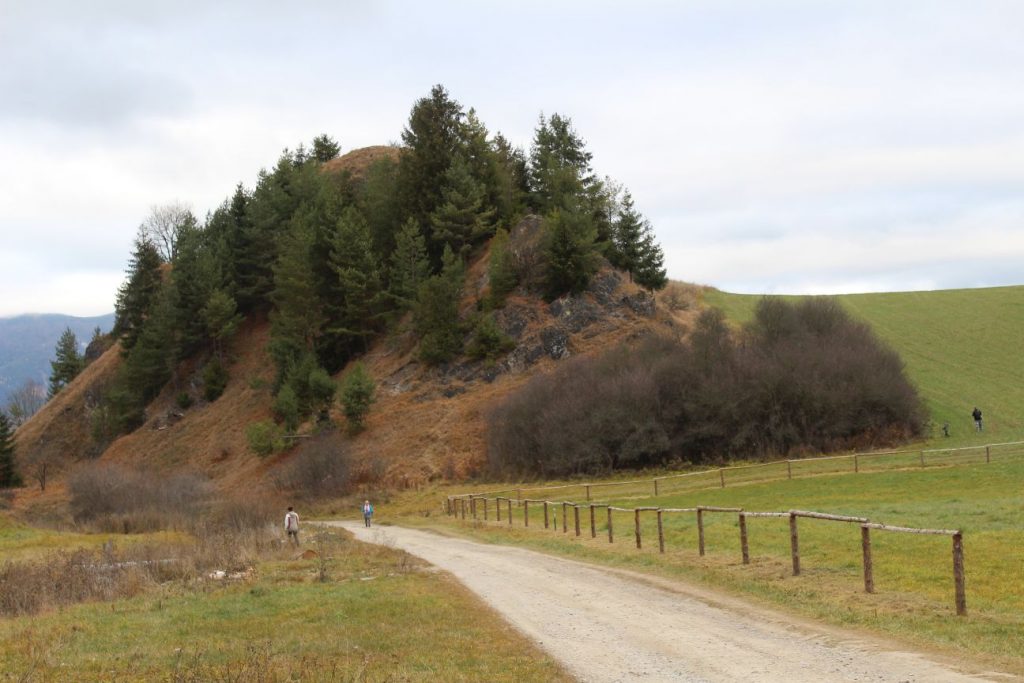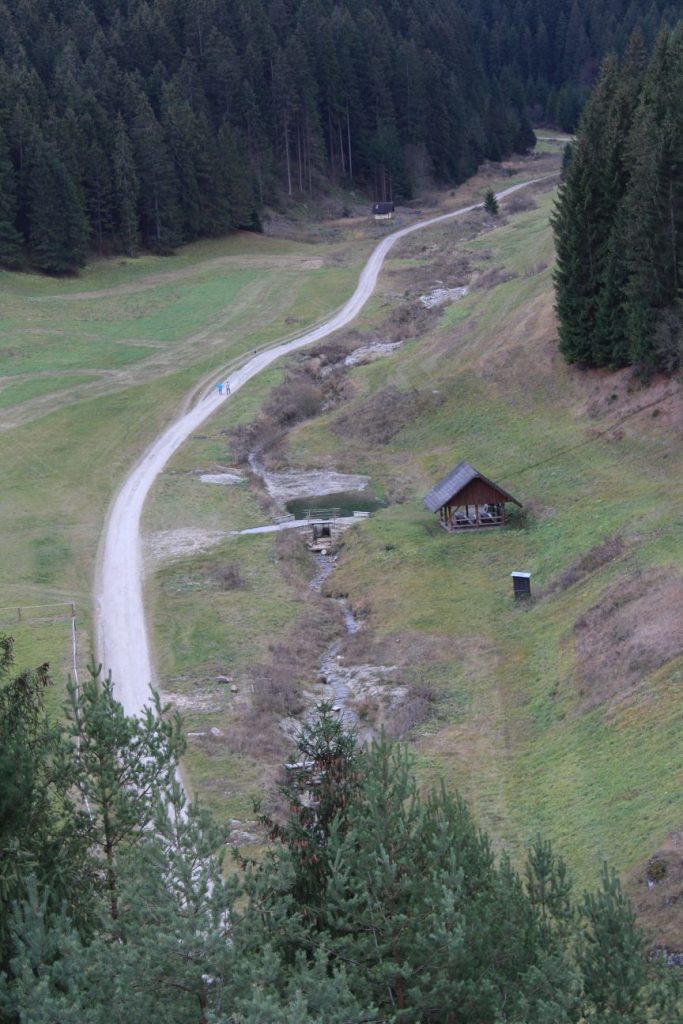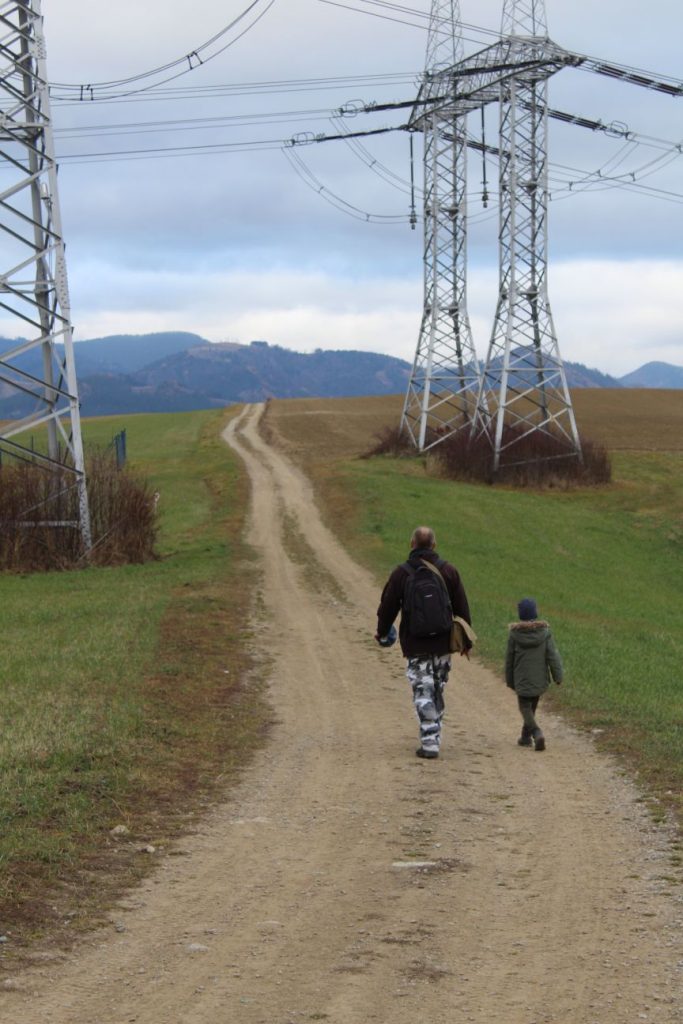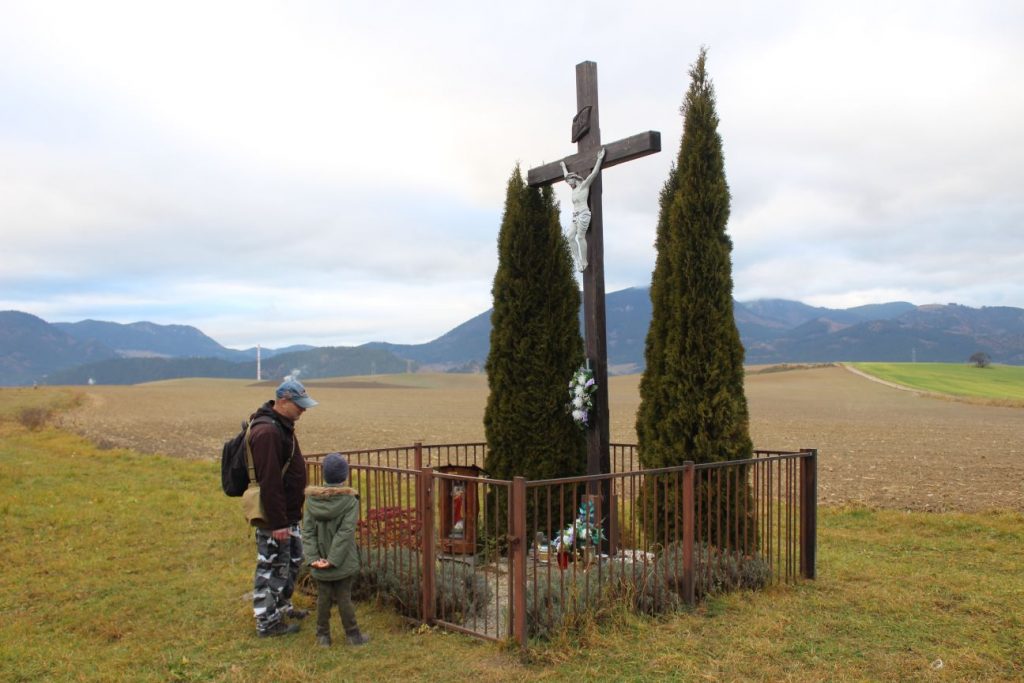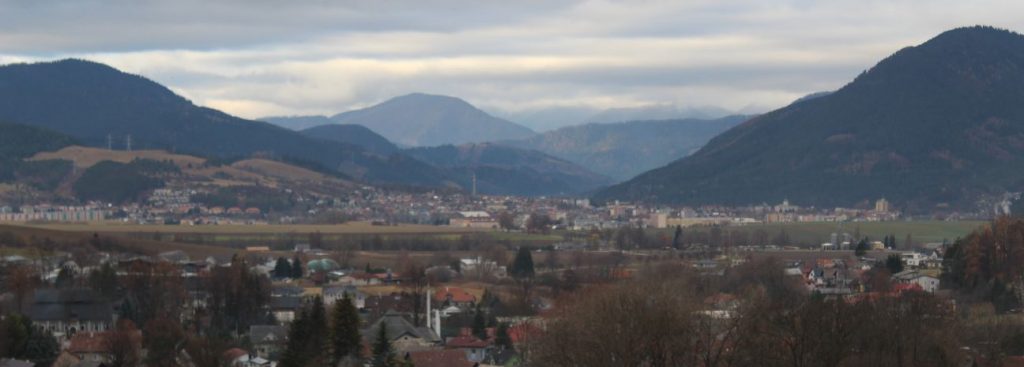Nature as Therapy: The Mineral Waters of Štiavnica
Our next health-motivated trip will take us to Liptovská Štiavnica, in which there are over twenty documented mineral springs. The name of the town itself is also probably derived from the abundance of “juices” (“štiav”), referring to the mineral waters. In addition to the selected mineral springs, we will also visit the mouth of the Zemianska Valley with a rocky cliff called “Lúčny Hríb” (Meadow Mushroom), and we will take a walk along a viewpoint path leading to a cross.
To get to the beginning of our route, we will take a suburban bus from Ružomberok and get off at bus stop “Lipt.Štiavnica,,garáž SAD“. For easier orientation, just look out of the bus window on the right side and get off right after passing by the local church. From the bus stop, we continue a few metres further ahead towards an intersection, where we turn right to a road running uphill. To help us find the way, there is an arrow located at the intersection, which is pointing to “Prameň Medokýš“ (Spring Medokýš). Situated directly at the intersection are also educational panels, which inform us about the history, the present situation and the future plans of the town. After a few metres of walking uphill, we get off the road to the left, to a small pond with fish. A small bridge over the creek at the periphery of the pond will lead us to a small children’s playground. Situated by the pond and the playground are two old protected trees, which have been growing here for a few centuries. On a small path, we pass by the playground and the tree, to get to an asphalt road. At the nearest intersection, we turn right. Direction sign “Chalúpkovo, reštaurácia“ will show us the way. At the right-hand curve, we make a turn to an indistinct path running to the left through the trees. After a few dozen metres, we will hear the sound of water, and following in that direction, we will see a creek flowing down the supporting wall located on the right side of the road. This is mineral water, which is led here in a pipe from a well situated a few metres uphill, in a garden. The well was originally made with the intention to be used for drawing the water into bottles, however, that intention was never put into effect. The mineral water contains several health-promoting components, among which we can mention, for instance, the iron, which is evident in the sediments. The composition of this spring has beneficial effects on the human body, especially on the digestive tract. According to the local inhabitants, those who drink this water do not know “acid reflex”. We continue to another large tree, which is also protected. At this place, we continue straight ahead by the mesh fence, towards the trees and bushes. After passing through the growth-covered path turning slightly to the right, we will see a metal fence, in which there is another mineral spring, called “Vyšňanský Medokýš“. The surroundings of the spring are neglected, which proves that the spring is no longer in use, which is unfortunate. In the past, the spring was actually roofed with a wooden shelter, of which not even a trace has remained. Along the fence, we return to the protected tree, and passing by the tree, we continue down the hill, towards a creek. We cross the bridge over the creek and we continue on the path behind the houses, to a road leading to the valley. The road will lead us to an intersection, where the direction signs inform us about the names of the valleys. A few metres away from the intersection, there is a spring, which is unofficially called “Hríbik” (small mushroom), based on the shape of the vessel from which it flows out. Although the water does not have the typical taste of the acidulous waters in this area, it is very rich in minerals, such as calcium. Our journey continues in the direction to the Zemianska Valley, in front of which there is another medicinal spring called “Očianka“, situated on the right side of the road. Washing your face with the water from the spring is known to lower eye pressure and help keep your eyes healthy, or even help with eyesight issues. The water from Očianka has never been examined by experts, but based on people’s experience, washing your face with this water cannot hurt you and it might bring you benefits. We continue further into the mouth of the valley, where we pass under a rocky cliff, presently covered with grass, called “Lúčny Hríb” (meadow mushroom). Situated at the mouth of the valley is a flood control dam, a shelter with a sitting area and a fireplace. After a short rest and having a look at the dam, we head back in the direction to the town, to the rocky cliff, in front of which we turn right and by-pass the cliff on a meadow. If you are interested, it is possible to climb the cliff on a steep path leading to the top. As evidenced by the archaeological finds from this location, there used to be a hill fort located at “Lúčny Hríb” in the past. In the surroundings of “Lúčny Hríb”, there are many sloe bushes, and even though we did not find sloes any more, we enjoyed the flesh of soft, “frostbitten” rose hips. We continue along the ridge of the cliff, or below the cliff, at the end of which we will see a field road. We continue on the road in the direction between the poles of the high voltage line. The road leads us above the town, to an intersection with a panelled road, where we will see a wooden cross, at which we can stop by. The section from cliff “Lúčny Hríb” to the cross has a view, which includes the Choč Mountains, the West Tatras and a part of the Great Fatra. From the cross, we walk down the panelled road back to the centre of Liptovská Štiavnica, where we will find a church, a manor house and a wooden bell tower. It is only a short section to the bus stop, at which we can use the services of the local refreshment establishments while we are waiting for the bus, or make a detour to recreational town Chalúpkovo, which has a restaurant.
What was a bit disappointing on this route was that even though there were litter baskets located by the springs, there was still a lot of litter around, which we had to pick up. At the end, we would like to ask that you also explore the locations of your trips with the approach of #ObjavUdržateľnéSlovensko (DiscoverSustainableSlovakia) and that you always carry away anything that does not belong in nature. We do not recommend using the litter baskets and bags located in nature, as the litter is often scattered around by strong winds or woodland animals, and that is why it is better to always carry everything away with you.
We will probably include Liptovská Štiavnica in our trips again, as there is always something more to discover.
The text was prepared by Milan Kolčák and Ján Benčík from the Ružomberok Information Centre.
This is the tenth article of the article series with subtitle “Nature as Therapy”.
Published: 25.11.2021

